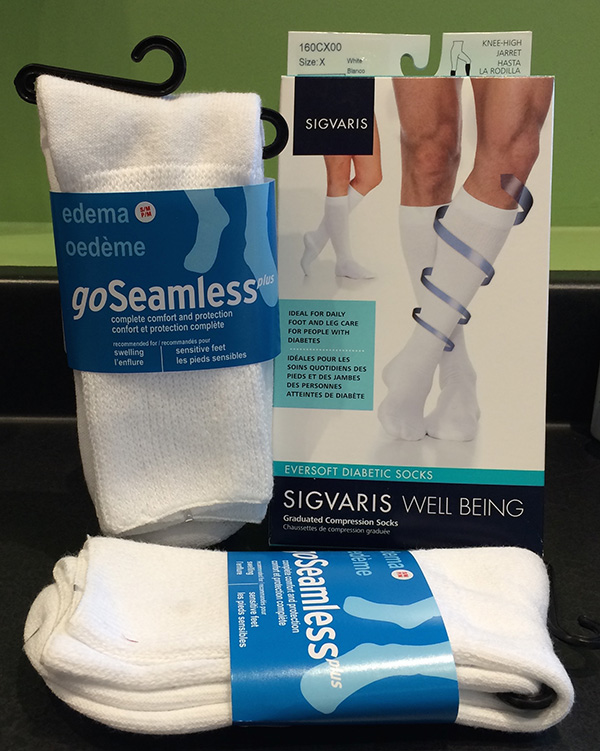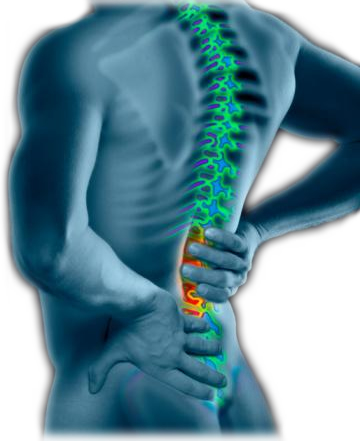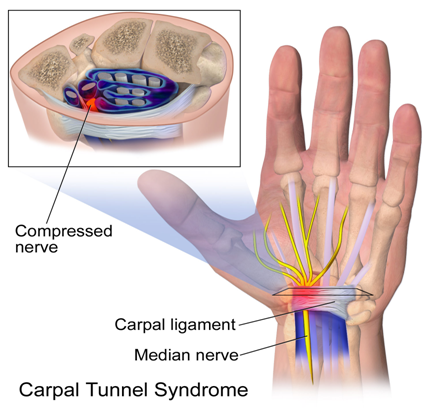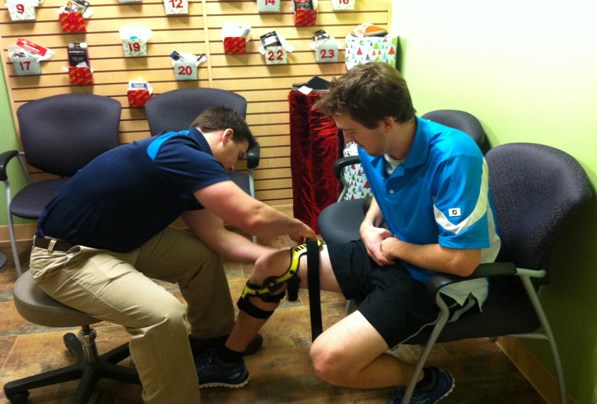There are two main conditions that can affect diabetic feet:
 First, with damage to the nervous system, a person with diabetes may not be able to feel his or her feet properly. Normal sweat secretion and oil production that lubricates the skin of the foot is impaired. These factors together can lead to abnormal pressure on the skin, bones, and joints of the foot during walking and can lead to breakdown of the skin and subsequently sores may develop.
First, with damage to the nervous system, a person with diabetes may not be able to feel his or her feet properly. Normal sweat secretion and oil production that lubricates the skin of the foot is impaired. These factors together can lead to abnormal pressure on the skin, bones, and joints of the foot during walking and can lead to breakdown of the skin and subsequently sores may develop.
The second issue is that damage to blood vessels and impairment of the immune system can make it difficult to heal these wounds on diabetic feet. Because of the poor blood flow, antibiotics cannot get to the site of the infection easily.
The best treatment for the foot issues is prevention.
- Control your blood sugar as this is the only way to prevent all of the diabetic complications.
- Regular Foot Exams: Diabetics should get into the routine of daily foot self-examinations and also after any foot trauma, no matter how minor.
- Foot Care: Proper foot care for diabetics is very important. Wear seamless socks made of materials that wick moisture away from your feet.
- Soles in Motion has a foot care nurse that provides diabetic foot care can be a great resource to show you how to properly care for your feet and educate you about ways to prevent serious problems.
- Proper Footwear: Poorly fitting shoes are a common cause of diabetic foot problems.
- Diabetics should wear sturdy, comfortable shoes with socks whenever possible to protect your feet.
- Never walk barefoot, even indoors.
- Always check the insides of your shoes before putting them on.
- Diabetic footwear should have a high, wide toe box; removable insoles to be able to insert orthotics if necessary, rocker soles to reduce pressure in the areas of the foot most susceptible to pain (such as the ball-of-the-foot) and firm heel counters for support and stability.
- Orthotics: For diabetics with flat feet, bunions, corns/calluses or hammertoes you may orthotics to be sure that there is no pressure being placed on certain parts of your feet. By customizing the orthotic to your foot, the insert will provide the best comfort and protection.
- Soles in Motion also specializes in diabetic socks and footwear designed to fit properly.
Soles in Motion offers no obligation assessments with our two Canadian Certified Pedorthists. Call and make an appointment – Education is free!!!





 Most people have some type of back issues at one time or another in their lifetime. It can occur anywhere from the neck to the tailbone and can be a result of wear and tear, overuse or injury. Injuries frequently occur when you use your back muscles in activities that you do not do very often such as lifting heavy objects, yard work, painting, etc. Overuse injuries are most often from improper movement or posture. Whether a minor injury or severe injury or a medical condition a back brace may assist to reduce pain and increase activity level. Back braces are designed to help the wearer achieve proper posture and increase awareness of the position of the pelvis and spine. This constantly reminds individuals of their body positions, making it easier to avoid undesirable postures while in the healing process. By increasing the intra-abdominal pressure, a back support acts much like the stays and support rings of a barrel. If the support rings are tightened a stabilizing effect is achieved. A properly designed spinal support stabilizes the spine and acts in the same way. There are many types of back braces. It is important that the correct brace is selected for the condition or injury, but as well, it is as important that the brace fit the shape of the individual. It is important that you be assessed by a professional who takes all aspects of your health, life style, and body type into consideration.
Most people have some type of back issues at one time or another in their lifetime. It can occur anywhere from the neck to the tailbone and can be a result of wear and tear, overuse or injury. Injuries frequently occur when you use your back muscles in activities that you do not do very often such as lifting heavy objects, yard work, painting, etc. Overuse injuries are most often from improper movement or posture. Whether a minor injury or severe injury or a medical condition a back brace may assist to reduce pain and increase activity level. Back braces are designed to help the wearer achieve proper posture and increase awareness of the position of the pelvis and spine. This constantly reminds individuals of their body positions, making it easier to avoid undesirable postures while in the healing process. By increasing the intra-abdominal pressure, a back support acts much like the stays and support rings of a barrel. If the support rings are tightened a stabilizing effect is achieved. A properly designed spinal support stabilizes the spine and acts in the same way. There are many types of back braces. It is important that the correct brace is selected for the condition or injury, but as well, it is as important that the brace fit the shape of the individual. It is important that you be assessed by a professional who takes all aspects of your health, life style, and body type into consideration.








 Sports and performance compression socks help athletes maximize their performance and incorporate wicking materials to keep them cool. They provide valuable support for every discipline in both amateur and competitive sports. Be cautious, however, of sports compression that are not designed by a medical company. It is important that you be assessed by a professional who takes all aspects of your health, life style and body type into consideration. Most insurance companies cover compression if prescribed by a medical professional.
Sports and performance compression socks help athletes maximize their performance and incorporate wicking materials to keep them cool. They provide valuable support for every discipline in both amateur and competitive sports. Be cautious, however, of sports compression that are not designed by a medical company. It is important that you be assessed by a professional who takes all aspects of your health, life style and body type into consideration. Most insurance companies cover compression if prescribed by a medical professional.


